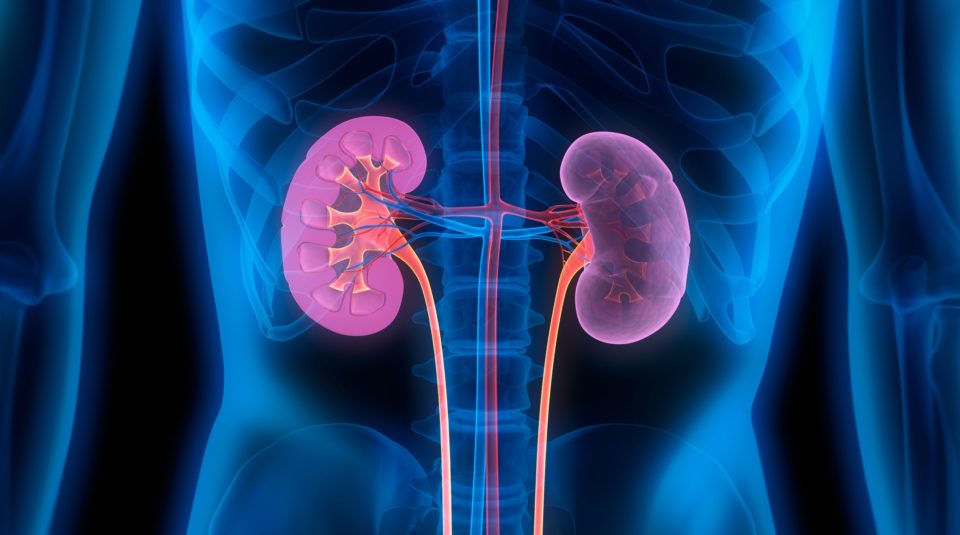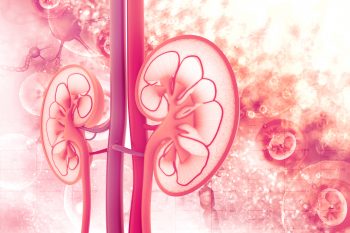
Increased excretion of urinary oxalate, enteric hyperoxaluria, can occur as a complication of fat malabsorption associated with gastrointestinal surgery or other gastrointestinal conditions. Hyperoxaluria is also a major risk factor for kidney stones and can lead to chronic kidney disease (CKD) and end-stage renal disease (ESRD). Levels of plasma oxalate can rise subsequent to decreasing kidney function, resulting in oxalate deposition in the kidneys and other tissues.
Reloxaliase is an oral enzyme that degrades oxalate in the gastrointestinal tract. Researchers, led by Felix Knauf, MD, are enrolling patients with enteric hyperoxaluria and CKD in a pilot study to examine the efficacy of reloxaliase in reducing urinary oxalate excretion and plasma oxalate. The study was described during a poster session at Kidney Week 2019 in a poster titled Pilot Study of Reloxaliase in Subjects with Severe Enteric Hyperoxaluria and Hyperoxalemia: A Pro Tem Analysis of Study ALLN-177-206.
Inclusion criteria for the open label study are diagnosis of enteric hyperoxaluria, CKD< and hyperoxalemia (defined as urinary oxalate 40 mg/24 hours; estimated glomerular filtration rate <45 mL/min/1.73 m2, and plasma oxalate >5 mmol/L, respectively). Participants receive reloxaliase 7500U orally five time per day for 12 weeks. Measurements of plasma oxalate levels and 24 hour urinary oxalate excretion are obtained monthly; in participants receiving dialysis, plasma oxalate level is collected immediately prior to the dialysis session following the longest weekly interval between sessions. The change from baseline to the on-treatment average plasma oxalate level and urinary oxalate excretion were utilized to assess efficacy of reloxaliase.
To date, four participants with enteric hyperoxaluria have completed the study: two have stage 3 and 3bT CKD (short bowel syndrome, fat malabsorption status post-kidney transplant) and two receive hemodialysis (Crohn’s disease, pancreatic insufficiency). On average, treatment compliance was 90%, and the therapy was well tolerated. Twenty-four hour urinary oxalate excretion (normalized to creatinine) was reduced by 29% to 42%, and plasma oxalate level was reduced by 16% to 49%.
In conclusion, the researchers said, “In this population, reloxaliase was well tolerated and reduced both urinary oxalate and plasma oxalate level, suggesting the potential for reducing systemic oxalate deposition with chronic therapy. These preliminary data support further testing of reloxaliase in patients with severe enteric hyperoxaluria. To our knowledge, this is the first therapeutic reduction in plasma oxalate in patients with enteric hyperoxaluria and CKD with oxalosis.”
Source: Knauf F, Lieske JC, Pfau AC, Grujic D, Bernard KE, Kausz AT. Pilot study of reloxaliase in subjects with severe enteric hyperoxaluria and hyperoxalemia: A pro tem analysis of study ALLN-177-206. Abstract of a poster presented at the American Society of Nephrology Kidney Week 2019 (Abstract FR-PO316), November 8, 2019, Washington, DC.






 © 2025 Mashup Media, LLC, a Formedics Property. All Rights Reserved.
© 2025 Mashup Media, LLC, a Formedics Property. All Rights Reserved.